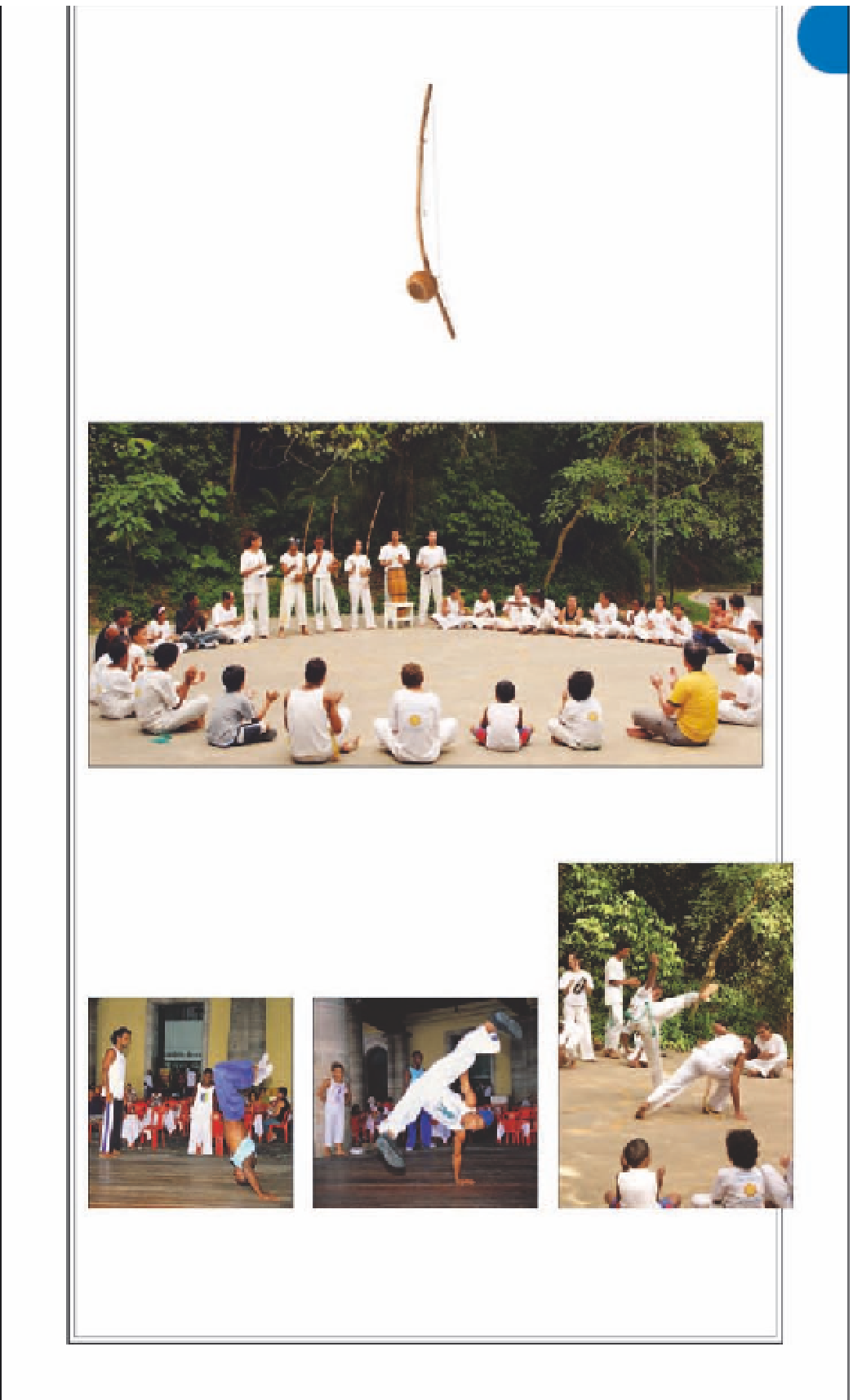Travel Reference
In-Depth Information
Capoeira
Bahia, the birthplace of
capoeira
,
offers visitors plenty of opportunities
to see this dazzling and mesmerizing
mixture of dance, gymnastics, and
martial arts.
Capoeira
was developed
by African slaves within Brazil as a
form of self-defense against their
brutal slave masters. The music was
added as a disguise. Many slaves
successfully escaped and formed
communities in the interior called
Quilombos (see p215)
. Outlawed in
1890 and forced underground,
the sport made a slow comeback
over the next few decades as white
Brazilians began to accept and
celebrate the African aspects of
Brazil's culture.
Capoeira
was fully
rehabilitated in the 1930s, when
President Vargas, calling it “the only
true Brazilian sport,” invited one of
the most renowned
capoeiristas
of
the day, Mestre Bimba, to perform in
the presidential palace. Today,
Mestre Bimba's school in Pelourinho
is run by his son, Mestre Nenel.
A
berimbau
Berimbau
, a single-string instrument that produces
a metallic droning sound, sets the
capoeira
beat.
African drums
are the additional
instruments used in
capoeira
.
The roda
, or the circle in which
capoeria
is always performed, is created by participants who sit or
stand and clap to the beat of a single-stringed
berimbau
. The people who form the
roda
will take
turns, usually with no predefined order, to go inside the circle and participate.
CAPOEIRA MOVES
Capoeiristas
exhibit incredible muscle control, strength, and
flexibility as they carry out acrobatic moves, while keeping
their opponent at bay. The
capoeira
moves are carried out at
lightning speed, but with a dance-like fluidity, where each
move is a combination of skill, balance, and beauty.
Escorpião
, or the scorpion
move, is a combination of
back flips and cartwheels.
Both opponents try to create
a beautiful performance.
Au malandro
starts like a
cartwheel, but only one hand
goes down while the opposite
leg kicks up in the air in a
swift, fluid move.
The esquiva
(escape), a
low ducking move, is a
very common one since
capoeiristas
primarily attack
with kicks and sweeps.


































